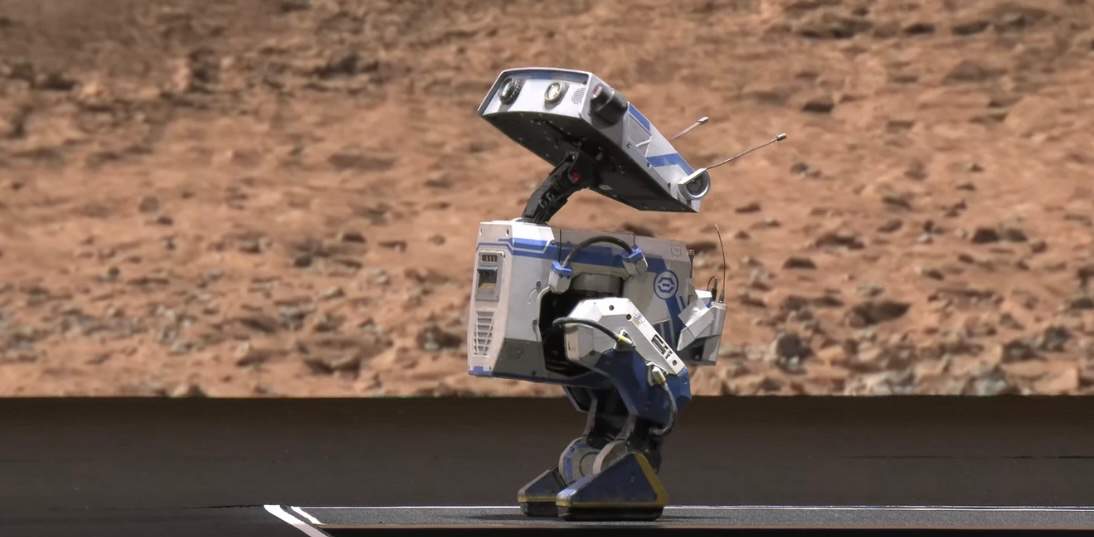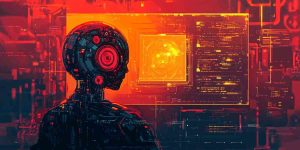NVIDIA’s GROOT N1: Revolutionizing Autonomous Robotics with Fluid, Lifelike Movements

In the fast-paced world of robotics, innovation never stands still. One such breakthrough is GROOT N1, a powerful AI-driven system developed by NVIDIA that is transforming the way robots interact with their environment. The system is behind the development of highly advanced robots, like the robot dog that has garnered widespread attention due to its uncanny, smooth, and lifelike movements. Powered by GROOT N1, these robots are learning to navigate, adapt, and perform complex tasks, blending cutting-edge technology with near-human-like agility.
The Core of GROOT N1: AI and Deep Learning
At its heart, GROOT N1 is an advanced system that enables machines to learn autonomously. Powered by NVIDIA’s powerful AI tools and the Isaac SDK, GROOT N1 provides the underlying infrastructure for robots to move with fluidity and intelligence. Rather than relying on hard-coded programming, GROOT N1 uses deep reinforcement learning algorithms to help robots learn by experience, adapting their behavior based on real-time interactions with their surroundings (Building an Intelligent Robot Dog with the NVIDIA Isaac SDK, NVIDIA Developer).
In essence, GROOT N1 acts as the “brain” of these robots, processing vast amounts of data to allow them to learn from every step they take, every interaction they have, and every obstacle they overcome. The system’s advanced AI models enable a level of movement that feels more natural than mechanical. With GROOT N1 powering the AI, robots can demonstrate human-like agility, adapting seamlessly to new tasks and environments. This makes the robots, like the famous robot dog, appear to move effortlessly and smoothly, with behaviors that seem almost organic.
Deep Learning and Real-Time Adaptation
The AI system behind GROOT N1 doesn’t simply follow pre-programmed actions; it learns from experience. This means that as the robot interacts with its environment, GROOT N1 continuously refines its movements and decision-making processes. Whether it’s navigating uneven terrain, climbing stairs, or even reacting to unforeseen changes in the environment, the system allows the robot to adjust in real-time, learning and improving as it goes. This adaptive learning process gives the robot an almost lifelike responsiveness, where its behavior evolves the more it interacts with the world around it.
This technology is not limited to a simple set of pre-defined tasks. Robots powered by GROOT N1 can respond dynamically to complex and unpredictable challenges. They can perform a variety of tasks, from running to balancing on unstable surfaces, all while adapting to environmental factors. These improvements in movement and intelligence make GROOT N1 a critical development in the world of autonomous robotics, with far-reaching applications in areas such as search and rescue, elderly care, and even space exploration (AI Conquers Gravity: Robo-dog, Trained by GPT-4, Stays …, DrEureka).
Smooth, Lifelike Movements: The Uncanny Realism of GROOT N1-powered Robots
One of the most striking features of robots powered by GROOT N1 is their lifelike movements. Unlike many robotic systems that appear stiff and mechanical, the robots powered by GROOT N1 exhibit fluid and natural movement, mimicking the grace and agility of living creatures. This smoothness is a result of the AI’s ability to constantly adapt its movements in real-time, allowing the robots to make split-second decisions to maintain balance, navigate obstacles, or shift posture.
In a world where robots have often been criticized for their clunky, unnatural movements, GROOT N1 changes the narrative. It empowers machines to demonstrate agility and fluidity that appear almost uncanny, as if the robot is more like a living creature than a mere machine. Watching a robot powered by GROOT N1 move across a surface, balance on a yoga ball, or navigate obstacles with ease brings a sense of wonder—it’s hard to believe such sophisticated behavior comes from a machine and not a living organism (Nvidia’s Eureka helps robot dog perfect yoga ball balance, Interesting Engineering).
Blurring the Lines Between Organic and Artificial
This uncanny, lifelike movement is a double-edged sword. On the one hand, it’s a testament to the success of GROOT N1’s AI system, which enables the robot to move and behave in ways that feel almost human or animal-like. On the other hand, it evokes a sense of the uncanny valley, where machines that appear almost human trigger a complex emotional reaction. As robots powered by GROOT N1 move, they can feel strangely familiar yet distinctly artificial, prompting both awe and unease in viewers.
This phenomenon brings us face-to-face with the evolving relationship between humans and robots. As machines begin to exhibit behaviors and movements that resemble those of living beings, our interactions with them will undoubtedly change. Will we accept them as partners in daily life, or will the near-human quality of their movements provoke resistance or fear? The development of GROOT N1 opens up these philosophical questions, pushing us to reconsider the future role of robots in our society.
The Power of Simulation: Accelerating Learning with Virtual Environments
A key factor in the success of GROOT N1 is the use of simulations to train the robots. Instead of relying solely on real-world testing, which can be costly and time-consuming, GROOT N1 allows developers to create virtual environments where the robots can learn and improve. These simulations replicate real-world challenges, such as unpredictable terrain or obstacles, enabling the robots to practice and refine their movements before they face real-world conditions.
The use of simulation not only accelerates the learning process but also reduces the risks associated with testing robots in real environments. By allowing GROOT N1-powered robots to learn in a controlled, virtual environment, developers can expose them to a wider range of scenarios and train them more efficiently. This also provides an opportunity to experiment with new behaviors or fine-tune performance, ensuring the robots perform optimally when deployed in real-world situations (Building an Intelligent Robot Dog with the NVIDIA Isaac SDK, NVIDIA Developer).
GROOT N1: Shaping the Future of Autonomous Robotics
As we look to the future, the implications of GROOT N1 extend far beyond just robot dogs or entertainment. This system is shaping the future of autonomous robotics, offering a vision where robots can seamlessly integrate into human environments, assist in everyday tasks, and even become companions. The ability of robots powered by GROOT N1 to learn, adapt, and perform in a variety of environments opens up exciting possibilities for industries ranging from healthcare and manufacturing to entertainment and public safety.
Moreover, the versatility of GROOT N1 means that it can be applied to various other robots, creating an ecosystem where autonomous machines can learn and work in tandem with humans. The system’s ability to power robots that can adjust to new tasks, move with lifelike fluidity, and react to unforeseen challenges positions GROOT N1 as a transformative force in the world of robotics.
In the coming years, as GROOT N1 and similar AI systems continue to evolve, we will likely see robots that move, think, and interact in increasingly sophisticated ways. What was once the stuff of science fiction may soon become part of our daily lives, with robots powered by systems like GROOT N1 enhancing everything from healthcare to transportation. As these robots learn and grow, they could very well become essential partners in the world of tomorrow.













